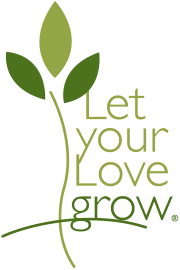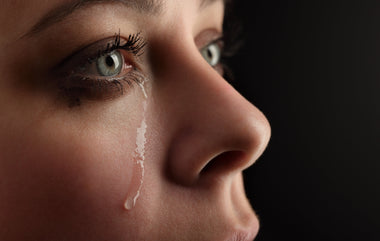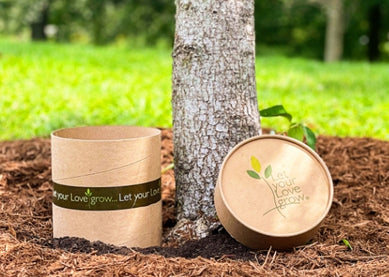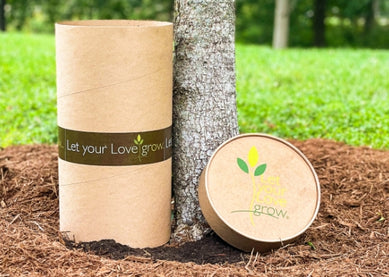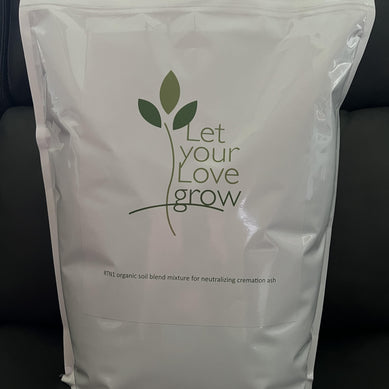Shades of Green: What is a Green Burial?
Let Your Love Grow Co-Founder Bob Jenkins was recently featured on “I Woke Up Dead…Now What.” with Jodi M. Clock — an international speaker and expert assisting families with difficult conversations about legacy planning. In the episode, they discussed greener alternatives after a loved one passes on and creating life after death.
Explore Jodi’s findings on green burials below and listen to the episode in full on all streaming platforms.
Shades of Green
To appreciate what is considered a “Green Burial,” it’s important to understand the history, regulations, and current practices that have led up to today’s “Green” options for body disposition after death. After reading this, one thing will be abundantly clear. There is no one-size-fits-all “Green Final Care or Burial” practice. There are numerous options that meet some or all of the green criteria. For purposes of this conversation, the takeaway should be that there are many “Shades of Green,” just like in the color wheel.
The History of Green Burial
Green burial is also commonly referred to as a “Natural” burial. This form of end-of-life disposition is a completely different experience and mindset than what funeral options the average person is accustomed to. The average individual may consider this practice either new or radical, but they are not! Burials date back as far as 335,000 years. In 2013, at the Rising Star Cave located in Spain, 28 skeletons were discovered. This was assumed to be the oldest marked grave.
Neanderthals Natural Burial: Inhumation of Burial Begins
So, what does this mean? Simply put, there was a hole in the earth, where Neanderthals placed their deceased inside the hole and covered everything with soil. Science has proven that the Neanderthals buried people 130,000 years ago. They have been credited as being the first known culture to have mortuary practices. Artifacts show that Neanderthals’ deceased were buried and placed flowers as well as sticks and stones on top of the grave. Thus, in today’s terms, a “green” or “natural” burial.
The Civil War Americanized Burials
During the 19th century, the United States entered into a civil war. This war was both the bloodiest and deadliest on U.S. soil compared to all other prior conflicts. Families wanted the remains of their deceased loved ones sent home and not buried in an unmarked mass grave. In order to safely preserve the body and keep everything disease-free and sanitary, the embalming process was introduced. Over time, in the practice of mortuary science, it became the standard to embalm a body prior to viewing and burial. This process is still performed today.
The Green Movement
In the late 1990s, Americans became concerned about chemicals and what was going into the water, air, and ground. People started to become aware of pollution. The sustainability of Mother Earth became a primary focus for many. As a result, some people started saying no to embalming and requested a more eco-friendly option, hence the rebirth of a modernized “Green or Natural” Burial.
How the Death Care Profession Defines and Responds to Green Funerals
Truth be told, between the cemeteries, funeral homes, and crematories, no one can agree on a true definition of a green standard. Each area of expertise has its perception of what green should look like — however, even within each area of service, they don’t even agree. The following paragraphs will highlight the shades of green, terms, and verbiage that appear to be agreed upon.
Caskets
For a casket to be considered green, it must be biodegradable, both in the ground and if placed in a cremation retort. There are three types of caskets that commonly fit this criterion:
- Wicker
- Cardboard
- Wood with no nails
Cemeteries
Cemeteries come in all shapes and sizes. Some are owned by municipalities, others privately owned. The private cemeteries that have embraced this concept, again, differ greatly from one to another. What they do agree on is having a casket like discussed above, no embalming, and no vault. Other than that, each property differs in the layout, the ability to have the grave marked with the deceased’s name on it, and how to care for the lawn and ground coverage.
“Conservational Burial” or “Natural Burial”
A natural burial is defined as swaddling the deceased in a shroud without any embalming or chemicals used and then placing them directly in a gravesite that is in a nature preserve designated for burials. The gravesite is typically six feet deep, there are no vaults, and once the grave is recovered with soil, the gravesite is not marked. Some places do let families place a marker on a tree nearby and purchase a bench in their honor for others to sit and reflect. Currently, there are 220 plus natural burial cemeteries. The entire premise of this type of burial specifically aims to restore the deceased back to its natural habitat.
Precision Organic Dispersal
Precision Organic Dispersal is an environmentally positive alternative solution to burial and cremation. By using a scientifically-formulated soil blend known as RTN, we are able to turn a body into nothing but a nutrient-rich soil blend in a matter of months. Our system, known as Precision Organic Dispersal, or POD, is unique in that it uses precise measurement and control to accelerate natural decomposition without the need to open the chamber during the process.
Currently, there are six states that allow human composting: Washington, Colorado, Vermont, Colorado, Oregon, and New York. Individuals who support this new alternative (Precision Organic Reduction Dispersal /POD) believe in creating “Life and Death.” Science has successfully proven these by-products of the human composting process:
- The nutrients in the soil blend that remain are vital for our ecosystem to thrive.
- It regulates moisture.
- The amount of carbon dioxide in the air is reduced.
- Plant life is sustained.
The Wild West
As you can see, the United States is at the front end of “Green Burials.” There are no hard and fast laws, standards, and protocols across the board for all 50 states. Other countries have adopted green measures, while some continue to seek out green alternatives. The driving force is not only the belief in sustainability but also the lack of land and, quite frankly, the Bible. We’ve all heard it: “Ashes to ashes, dust to dust.” Bottom line, it’s not going away — however, presently like being a pioneer in the Wild West! Should you want to consider a green option for burial or a green solution on what to do with a loved one’s cremated remains once they have been returned to you, please consider listening to my podcast, “I Woke Up Dead…Now What.” with myself (Jodi Clock), and the expert on this topic Bob Jenkins, co-founder of “Let Your Love Grow.”
Meet the Author
Jodi Clock (www.JodiClock.com)
